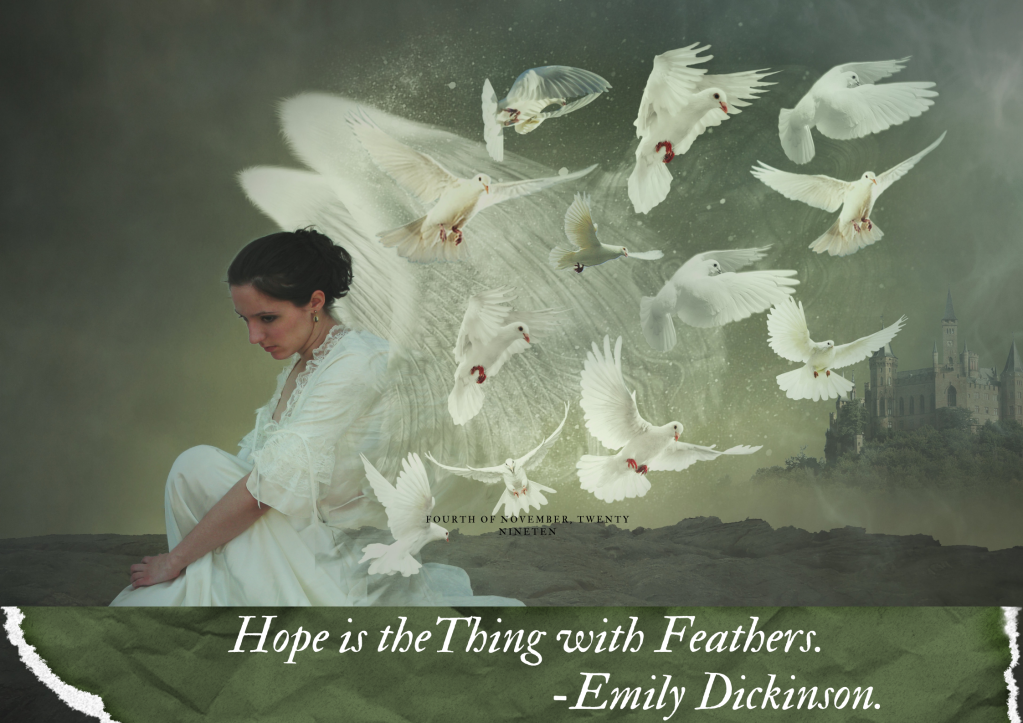
What do you call that which assures you that everything will be fine? What is that makes us believe in a better tomorrow? What is that which lifts us out of our difficulties? The answer is hope. In this poem ‘Hope is the Thing with Feathers’, the poet Emily Dickinson praises hope and brings out its importance.
Hope is an abstract feeling and the poet gives this abstract feeling a shape of a bird. It sits on our soul and belts out tunes. These wordless tunes never cease. Hope doesn’t utter words of consolation and promises. It stands there supporting us, lending us strength by its tunes and ceaselessly does this routine.
“Hope” is the thing with feathers –
That perches in the soul –
And sings the tune without the words –
And never stops – at all –
Of all the Gales present in the world, hope sings the sweetest tunes. Their sweet tunes make us forget our bitter experiences. They remind us of happy moments awaiting us. Though the storm (our hardships and hurdles) snubs this little bird, it never leaves. During the hours of storms, hope gives us the warmth to survive the bitter coldness. It is really a wonder how this little bird (hope) keeps us together.
And sweetest – in the Gale – is heard –
And sore must be the storm –
That could abash the little Bird
That kept so many warm –
Hope never leaves us even in our hardships. The ‘chillest land’ and ‘strangest Sea’ refer to our struggles in life. Even at this stage, hope gives everything it can to us and asks nothing in return. Hope pours itself into its songs and lends us a will to challenge our problems. It is to be noted that ‘ “Hope” is the thing with feathers-’. The hope which can fly away anytime leaving us to our problems never does so. Rather it stands by our side and guides us through our darkest hours.
I’ve heard it in the chillest land –
And on the strangest Sea –
Yet – never – in Extremity,
It asked a crumb – of me.
The poetess uses a poetic technique called enjambment in this poem. Enjambment is used to carry an idea from one stanza to another without any pause. Here, the poetess carries the idea of Hope singing to the next stanza by saying it sings sweet.
It is an interesting study to know how this poem contrasts the poem ‘Hope’ by Charlotte Bronte. She considers hope as a ‘timid friend’ and as being indifferent to the poet’s struggle. Thus, the two poetesses view hope in a different light.


You must be logged in to post a comment.